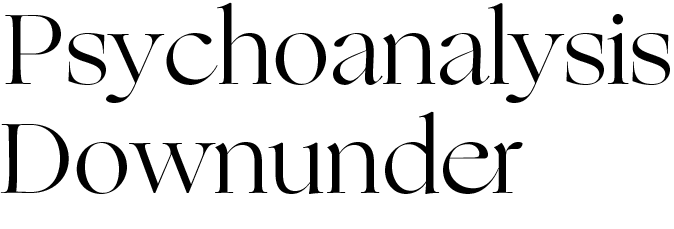Michael Moore
Introduction to the Papers
(Chair of the Organising Committee) on behalf of the ACPP
The six papers below were presented at an in-person Conference in Sydney on August 17, 2024. The inaugural ACPP Conference was held in Melbourne in 2020, also in-person, just prior to the Covid19 disruptions; a challenging time for the birth of a new Confederation that consists of four separate psychoanalytic organisations. The recent conference was in effect, only the second opportunity for us all, to meet face-to-face.
Given the above, we thought it apt to revisit the 2020 theme of Unity and Diversity in psychoanalytic psychotherapy; a “conversation” that had begun but had been - interrupted. The Walt Whitman quote “I am large, I contain multitudes” prompted proposals from individuals in the four MAs, in short time, which seemed to validate our intention. We also decided to make the conference open to all in the community interested in psychoanalytic work and ideas.
Looking more closely at the papers and the program, it may be helpful to understand that each of the papers were of 30 minutes duration, arranged in pairs. The pairings were selected on the basis that they either had something in common or seemed to speak to each other. After each pair presented, there was 45 minutes of discussion time. The Conference concluded with a general discussion of 60 minutes. Our hope that the ample discussion time would be well received seemed to be confirmed by its liveliness and richness. The Confederation has organised Online forums in coming months; spaces to facilitate further conversation.
I will largely let the papers speak for themselves notwithstanding a brief overview.
The first pairing of McArdle and Shafer, share a focus on unconscious representations in the dyad from different perspectives. For McArdle, “therapy is a playhouse for dramas to unfold”, evocatively focusing on the richness of meaning-making in the inner worlds of both participants. Shafer exquisitely unfolds his integration of “unconscious systems psychodynamics” to the therapy relationship, drawing on group relations thinking. Both share the qualities of complexity and co-creation.
Chester and Coburn share an interest in writing and imagination as well as curiosity related to the paradoxical meanings of “I”. For Chester, it is psychoanalytic theory and how it can be imaginatively applied to practice; for Coburn, it is poetry and how it can integrate experience as well as co-existing alongside other psychoanalytic perspectives. Their creativity is very striking, using the conference quote in relation to different clinical settings: Chester, the consulting room; Coburn, infant observation.
The final pair, of Sullivan and Frawley, are clearly focusing on the promotion of ethical approaches in relation to psychoanalytic work. In different ways, notions of the “frame” loom large in both papers. For Sullivan, reflecting on Balint groups, difference and diversity can assist in processing enactments and “blind spots”. There also seems a “blind spot” that is addressed by Frawley; the story of “journey and return” can bring a different and helpful perspective to difficult clinical situations such as “unplanned interruptions” to long-term work.
The discussions were excellently chaired: I would like to acknowledge the contributions of Laurie Lovell-Simons, Louise Gyler, Patrick Burnett and Peter Hengstberger.
We hope you find these conference proceedings rewarding.
